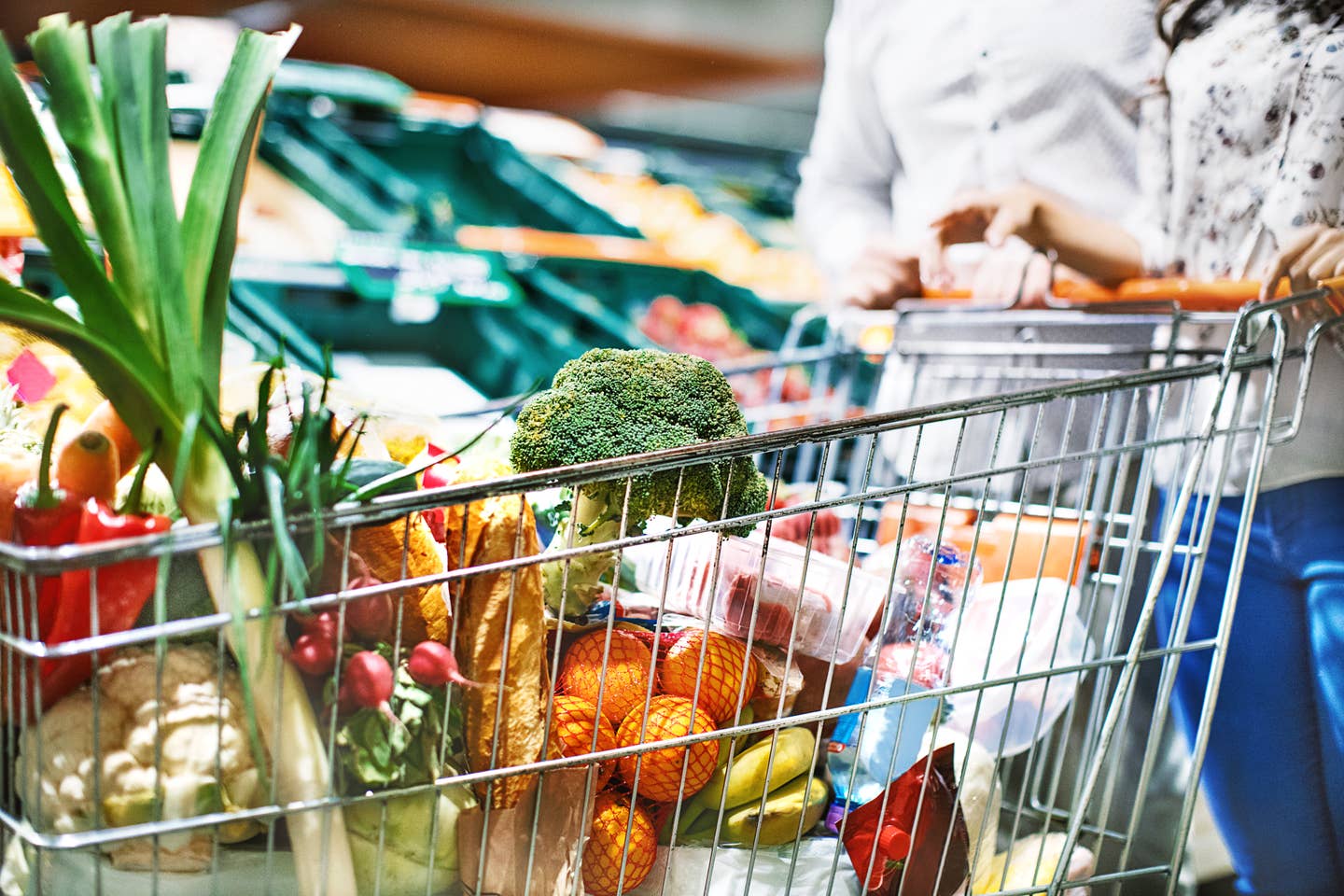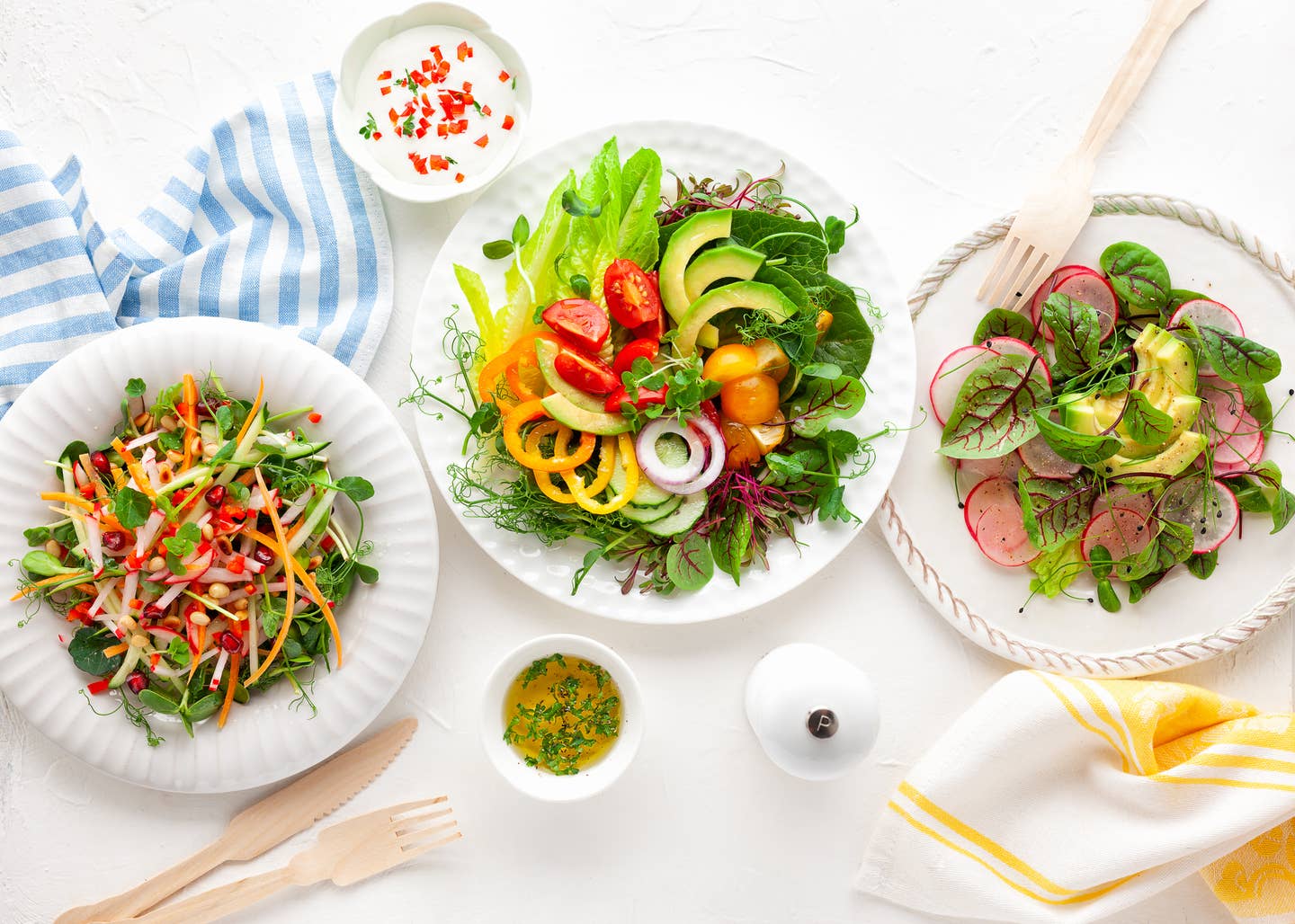
Is It Expensive To Be Plant-Based? Quite the Opposite, It Turns Out
If you’re thinking of going vegan, you can count on one thing: You’ll hear all about how expensive it is to be vegan — from people who aren’t actually plant-based or vegan. And if you think you’ll dodge those comments because you’re only making a partial switch to being vegetarian, think again. A recent study actually found that vegans and vegetarians save an average of $23 in comparison with their meat-eating counterparts during weekly grocery shopping.
Personally, I wish I had a dollar for every time someone said that it was pricey because by now, I’d have a whole lot of money to fund that supposedly expensive lifestyle of mine. I’d heard this myth so many times, that I just kind of accepted it as a fact and I figured that I’d budget a little differently and cut corners elsewhere.
But when I made the change, my grocery bills didn’t go up. In fact, they went down—way down. And I’m not alone. One study published in the Journal of Hunger & Environmental Nutrition found that vegetarians spend an average of $750 less on food per year than their meat-eating counterparts, a number that’s likely even higher today.
Why? Put simply, meat is expensive, and over the last 10 years, the prices of animal products like beef and seafood have increased by more than 40 percent. And the better the quality, the higher the prices. Many plant-based sources of protein, on the other hand, are incredibly affordable. “Beans, lentils, chickpeas, and other legumes are the cheapest sources of protein on the planet,” says Robert Graham, MD, an internal, functional, and integrative medicine specialist and the founder of FRESH Med NYC at Physio Logic in Brooklyn. “One bag of beans can last a family of two for days. And if you add whole grains to them—brown rice, quinoa, barley—you have the perfect meal with protein, complex carbohydrates, and all nine essential amino acids.”
And let’s not forget the other stars of the show in your plant-based diet: the vegetables and fruits that provide even more vitamins and minerals, as well as antioxidants. Yes, buying organic produce can get pricey, but not everything you eat has to be organic. Dr. Graham says that certain foods are worth it, though—namely, whatever tops the Environmental Working Group’s Dirty Dozen.
This year, that dubious distinction goes to strawberries, spinach and kale, so go organic with those items if possible. For the others, you can keep costs down with non-organic items at the grocery store or, even better, by buying locally. CSAs can be an affordable option, and one that is perhaps even better for the planet than choosing organic since the food doesn’t have to travel. Or, look to Misfits Market, a website that sells and ships boxes of misfit produce, which may look odd but taste just the same, at nearly 40 percent less than grocery store prices.
The real culprits in a high vegan grocery bill? Pre-packaged foods, as well as mock meats and cheeses. Those pre-packaged foods aren’t a whole lot different than what non-vegans buy…except, you know, they’re vegan. They all cost more to some degree because they’re convenient, and you pay a premium for that convenience. And while we’re on the topic, it’s important to note that those healthy-sounding foods might not be as healthy as they seem. There’s a good chance that they’re overly processed and preservative-laden, which means that if you’re not careful, you could be adding a ton of sodium, GMOs, and herbicides into your diet. “[Some products] hide behind the banner of ‘natural,’” says Dr. Graham. “Try to buy foods without labels—the whole, real foods.”
How to Save Money on a Vegan Diet
You can save a bundle and eat healthier, of course, by flexing your own culinary skills. Dr. Graham, who is also a certified chef, says that plant-based cooking lends itself particularly well to batch cooking since you can cook up a bunch of beans, legumes and grains at the same time, but vary up your meals with a few simple tweaks. “That’s the beauty of understanding your herbs and spices,” he says.
“You can make a bean and grain bowl Mexican very easily and also an Indian one.” He’s also a fan of Clean-Out-Your-Fridge Stew, which is exactly what it sounds like—throwing all of the leftover produce in your fridge into a broth base of onions, garlic and celery, then stewing it down. No wasted food, no wasted money, and, of course, it’s delicious.
Making your own non-dairy milk is also a great way to save money, since alternative milk products do tend to be more expensive than factory-produced cow’s milk (though on par with organic versions). While this may sound daunting, it’s a lot easier than you think. “A Vitamix is the best, but you don’t even need one—you just need a good blender,” says Dr. Graham. “You put raw cashews into boiling water, let it sit for 15 minutes, and then you blend it up. You have cashew milk in 15 minutes.” You also make your own oat milk, rice milk and almond milk.
But there’s so much more to the cost of a diet than the amount you spend on groceries every week. The bigger picture encompasses the rising healthcare costs associated with eating too much meat and other animal products. One recent study estimated that if Americans actually ate according to the recommended dietary guidelines, the country could save $180 billion in healthcare costs — and $250 billion if they gave up animal products altogether.
And let’s not forget the savings and other benefits that you, as an individual, could reap. A slew of research extols the positive effects of plant-based diets on everything from weight loss to your mood to disease prevention and intervention. “Vegan diets may protect against multiple chronic illnesses,” says Dr. Graham. “They’ve been linked to a lower risk of heart disease, diabetes, arthritis, and hypertension. You either pay the farmer now or you pay the doctor later.”
For more research-backed advice, visit The Beet's Ask the Expert articles.
More From The Beet






